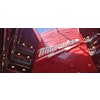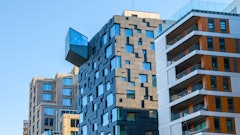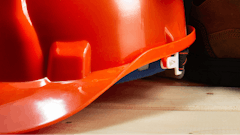"Green building" is a popular buzz phrase these days, but does anyone really know what it means? I think of it as a broad term, encompassing many different definitions depending on the context in which it's used. Generally it refers to a building process that lessens the impact construction can have on the environment. For instance, it may mean designing a building to maximize daylighting to reduce electricity needs; or it may mean choosing sustainable flooring materials such as bamboo or cork in place of hardwoods; or it may simply mean recycling construction materials to minimize the amount of waste that ends up in a landfill at the end of a project.
Much of green building focuses on reducing energy use or choosing recycled or sustainable materials. Another definition of "green building" can refer to it's affect on the people who live and work in those buildings or attend school in them. The PCA's most recent Concrete Homes Newsletter highlights the KC Health Home -- a house built with indoor air quality in mind. The builders used an efficient HVAC system and chose products with low toxicity levels to help keep air pollutants in the home at a minimum. As consumers become more and more educated about the buildings they work and live in, builders will need to meet their requests with structures that incorporate energy efficiency, indoor air quality and use of recycled materials more and more. As a business owner, it's in your best interest to stay informed of these trends and technologies and know how you can implement these requests on future projects.
What makes a home 'healthy'?
Latest in Concrete Thoughts
What Happened at Milwaukee Tool PIPELINE 2025
September 15, 2025
What It's Like Being Judged on Your Concrete Work
August 6, 2025
What Does 'Concrete Contractor' Mean?
March 28, 2025




![Adobe Stock 350182902 1 6759c43d679ca[1]](https://img.forconstructionpros.com/files/base/acbm/fcp/image/2025/02/AdobeStock_350182902__1_.6759c43d679ca_1_.67b78c75671e9.png?auto=format%2Ccompress&fit=crop&h=100&q=70&w=100)



![Adobe Stock 350182902 1 6759c43d679ca[1]](https://img.forconstructionpros.com/files/base/acbm/fcp/image/2025/02/AdobeStock_350182902__1_.6759c43d679ca_1_.67b78c75671e9.png?ar=16%3A9&auto=format%2Ccompress&fit=crop&h=135&q=70&w=240)







